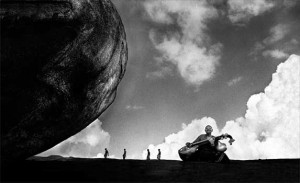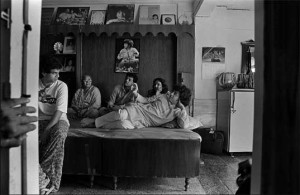Shot over decades, photographer Raghu Rai’s new book India’s Great Masters contains some powerful images of music and ecstasy. Rai speaks about the very private moments behind his resonant images
Some of his closest disciples didn’t visit classical vocalist Mallikarjun Mansur as he lay dying of lung cancer at home in Dharwar, Karnataka. Says Rai, “He was very fond of beedis. On his deathbed, he told his son (who smoked cigarettes), ‘Pilao’. He’d ask why the doctors didn’t cure him. When I sensed he wouldn’t survive, I asked if I could leave. I couldn’t bear it. He died the next day.”
Zakir Husain
Zakir Husain has always brought a rockstar air to the tabla. Rai says, “I once asked him who plays better — he or his abba [tabla maestro Alla Rakha Khan]. He smiled mischievously and said, ‘I.’ This photo was taken in his Bombay bedroom 20 years ago, while the family was watching television. He’s treated like a superhero even in his house.”


